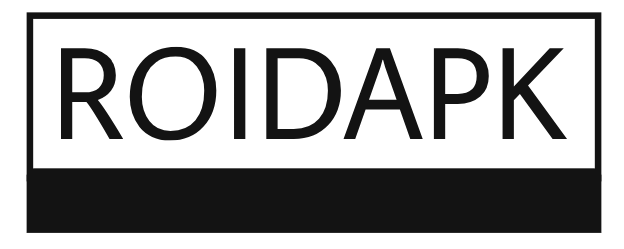Introduction: The Moment I First Heard “AuDHD”
I still remember the afternoon I stumbled across a thread on a tech forum where someone casually mentioned they were diagnosed with AuDHD and everything clicked. I’d been wrestling with burnout after marathon coding sessions, felt drained in back-to-back meetings, yet could zero in on a tricky bug for hours. Was I just scattered? Or was there something more? Recent research is shedding new light on this fascinating overlap of Autism and ADHD (AuDHD), and trust me, these findings could change how you understand your own neurotype especially if you’re navigating the fast-paced world of IT.
What Is AuDHD? A Quick Refresher
AuDHD refers to the co‑occurring presence of Autism Spectrum Disorder and Attention-Deficit/Hyperactivity Disorder in one individual. While autism and ADHD each have their own diagnostic criteria, researchers are increasingly recognizing that they share underlying traits things like atypical sensory processing, unique social patterns, and distinctive attention profiles. If you’ve ever wondered why you can hyper focus on a coding sprint yet feel overwhelming social fatigue in team stand-ups, you might resonate with the AuDHD neurotype.
Breakthrough Study on AuDHD Symptoms
A recent paper published in Neurodevelopmental Advances surveyed over 1,200 adults with diagnosed AuDHD, teasing apart which symptoms matter most in daily life. Three findings stood out:
- Social Fatigue as a Core Issue Nearly 78% of participants cited draining social interactions as their top challenge, even more than classic inattentiveness or hyperactivity.
- Overstimulation Beyond Sensory Input It’s not just bright lights or loud noises; information overload like a barrage of Slack notifications triggers overstimulation in 65% of those surveyed.
- Impulsivity Isn’t Always ‘Bad’ While impulsivity often gets a bad rap, this study noted that quick decision-making under pressure can be a superpower in emergency deployments or all‑night product sprints.
These insights reframe some of the “symptoms” we associate with ADHD or autism, highlighting how they play out in real‑world IT settings.
Navigating Social Fatigue and Overstimulation
Have you noticed how back‑to‑back video calls can leave you feeling wiped out, even if you were actively contributing? That’s social fatigue at work. It’s not shyness it’s the brain’s way of saying, “Hey, I need a reboot.” Here’s a simple strategy: schedule micro‑breaks into your calendar. Block five minutes between meetings to stretch, switch off your camera, or just stare out the window.
Similarly, overstimulation isn’t limited to sensory overload. In our connected world, a flood of emails, tickets, and pings can be just as overwhelming. Try batching notifications set your chat apps to “Do Not Disturb” and peek in on a schedule. You’ll find your brain has more bandwidth for deep work, without the constant jolt of distractions.
The Hyperfocus and Impulsivity Paradox
One of my favorite discoveries in the study was how hyper focus and impulsivity can coexist in AuDHD brains. You might dive deep into debugging a thorny issue, losing track of time and then impulsively volunteer to lead a new project that excites you. Both traits, when balanced, can become career accelerators.
- Leveraging Hyperfocus: Use it intentionally by defining clear “focus sprints.” Share your sprint goals with a teammate who can gently nudge you when it’s time to wrap up.
- Channeling Impulsivity: Keep a running “idea backlog.” When an impulse strikes say, to overhaul a UI component jot it down, then revisit during a designated innovation hour.
These small hacks help you honor your neurotype while staying aligned with team goals.
Co‑Occurring Conditions and the Neurotype Spectrum
The study also explored how co‑occurring conditions like anxiety or sensory processing differences interact with AuDHD symptoms. The result? There’s no one‑size‑fits‑all profile. One developer might grapple with overwhelming overstimulation but experience minimal impulsivity, while another might thrive on spontaneous problem‑solving yet need structured downtime.
This spectrum approach reminds us that “neurotypical” isn’t a default to aim for it’s one point on a broad human variation. Embracing our unique brain wiring can lead to richer collaboration and innovation.
What This Means for Neurotypical Workplaces
So, how should IT teams adapt? Start with inclusive practices:
- Flexible Communication: Offer both synchronous and asynchronous meeting options.
- Sensory‑Friendly Spaces: Provide quiet rooms or noise‑cancelling headphones for those hit hardest by overstimulation.
- Clear Task Frameworks: Balance autonomy for hyper focus with check‑ins that help manage impulsive shifts in priority.
By recognizing the value and challenges of diverse neurotypes, you’ll create a culture where everyone can contribute their best.
Conclusion: Embracing Your Unique AuDHD Superpowers
New research on AuDHD is more than academic it’s a roadmap for understanding how auti sm and ADHD intersect in meaningful ways, especially in IT careers that demand both deep focus and agile thinking. Whether you’re exploring your own diagnosis or supporting teammates, these insights can help you reframe challenges as strengths. So the next time you notice social fatigue creeping in or feel that exhilarating pull of hyper focus, remember: your AuDHD neurotype doesn’t need fixing. It’s a unique gift one that, when harnessed thoughtfully, can drive both personal growth and technological innovation.

